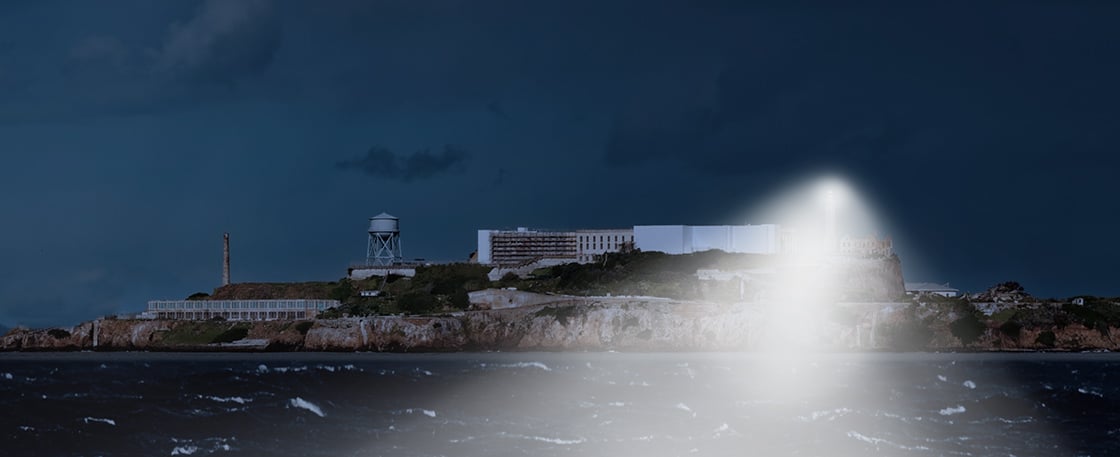At exactly 9:30 on the night of June 11, 1962, the lights at Alcatraz prison went out. Most of the inmates shivered on their thin, narrow beds, trying to get some sleep.
But not Frank Morris.
His heart pounding, Morris waited for the prison to quiet. If all went according to plan, he would never sleep behind bars again.
For months, Morris and three other prisoners, Allen West and brothers Clarence and John Anglin, had been secretly plotting to escape from Alcatraz, a bleak prison perched on a rocky island in the middle of San Francisco Bay. People said it was impossible to break free from “the Rock,” as Alcatraz was known. Morris and his cohorts were determined to prove everyone wrong.
The men had developed an ingenious plan. For months, they had been using stolen spoons and a power drill made out of a vacuum cleaner motor to dig away at the concrete walls of their prison cells.
It was painstaking work, but eventually they made holes big enough to crawl through. The holes opened into the prison’s ventilation system, where the men set up a secret workshop. Morris and his friends also took up a hobby: painting. That way, no one was suspicious when they ordered brushes, paints, and drawing boards. They used these supplies to create sections of fake wall to cover the holes in their cells.
At exactly 9:30 on the night of June 11, 1962, the lights at Alcatraz prison went out. Most of the inmates shivered on their thin beds, trying to get some sleep.
But not Frank Morris.
His heart pounding, Morris waited for the prison to quiet. If all went according to plan, he would never sleep behind bars again.
For months, Morris and three other prisoners, Allen West and brothers Clarence and John Anglin, had been plotting to escape. Alcatraz stood on a rocky island in the middle of San Francisco Bay. People said it was impossible to break free from “the Rock,” as Alcatraz was known. Morris and his cohorts planned to prove them wrong.
The men had developed an ingenious plan. For months, they had been using stolen spoons and a power drill made out of a vacuum cleaner motor to dig away at the concrete walls of their cells.
Bit by bit, they made holes big enough to crawl through. The holes opened into the prison’s ventilation system, where the men set up a secret workshop. Morris and his friends also took up a hobby: painting. That way, no one was suspicious when they ordered brushes, paints, and drawing boards. They used these supplies to create sections of fake wall to cover the holes in their cells.

